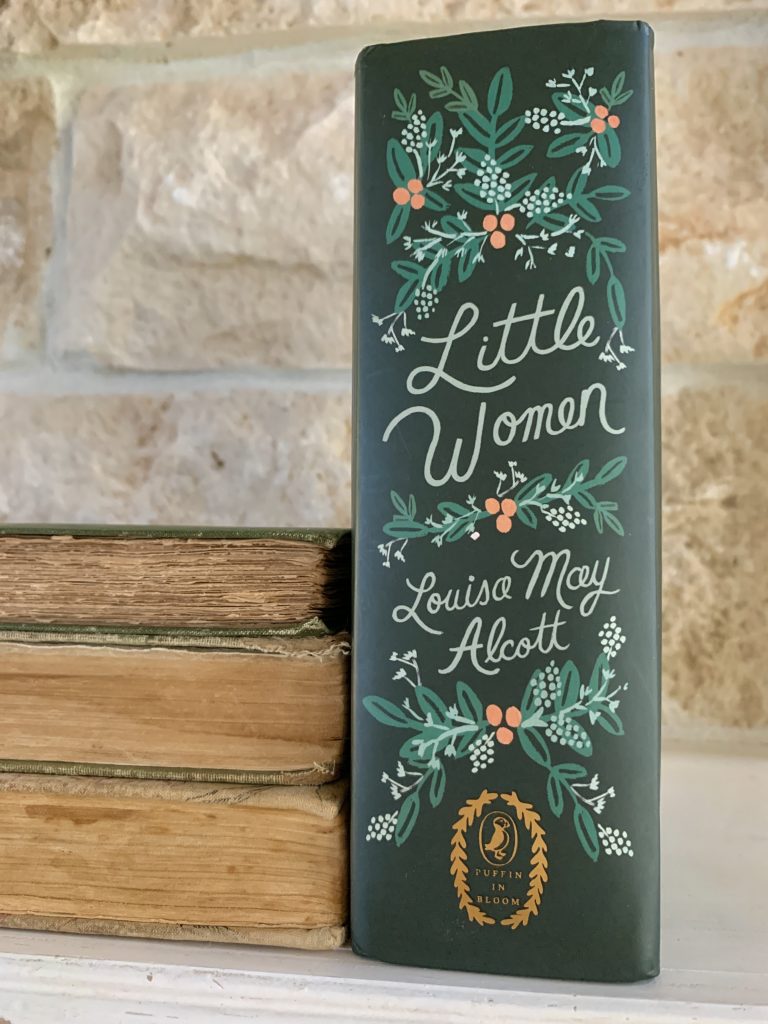I can still remember the first time I read Louisa May Alcott’s Little Women. I was about 9, a voracious reader, and in need of a new book. I found my mother’s well-worn copy on a shelf and soon fell into the story: “Christmas won’t be Christmas without any presents.”

Like so many before and after me, I was captivated by the March girls. I longed to be like Jo even while I knew, deep in my heart, that I was really more like Meg. I wept genuine tears when Beth died. And to this day, it enrages me that Jo and Laurie marry other people.
When my reading life is stagnant or I need a story that is both as familiar and comforting as a well-worn quilt, I return to the classics. Jane Austen, Charlotte Brontë, L. M. Montgomery: these writers and their works have an evergreen appeal. It’s partially the familiarity of these narratives and their characters, the consolation that is inherent in returning to a personally meaningful story time and again. Books like Little Women defined my childhood. But there is value in returning to these classics beyond the sentimental; rereading them as an adult gives me a fresh perspective on these beloved stories.
Little Women is no exception. In anticipation of seeing the new Greta Gerwig film adaptation, I spent the latter part of December once again reading Alcott’s classic work. And this time, I viewed the novel through the lens of a mother. I was struck by Marmee’s gentle morality, Meg’s struggles to balance motherhood and marriage, Jo’s desire to be a great “authoress” coupled with her eventual longing for hearth and home and children.
While the four March sisters take center stage in Little Women, it is Marmee’s presence that pervades the narrative. Her gentle wisdom is ballast both for her daughters and for the reader. She speaks with a motherly love that transcends time, even if the delivery is old-fashioned. Contemporary mothers can echo her hopes and dreams for her children, such as when she states, “I want my daughters to be beautiful, accomplished, and good. To be admired, loved, and respected. To have a happy youth, to be well and wisely married, and to lead useful, pleasant lives, with as little care and sorrow to try them as God sees fit to send.” Her love for her daughters infuses her words and actions, her desire that they become fully-realized adults.
Marmee is a model of maternal steadfastness, keeping her family’s spirits up while Mr. March is away. Her daughters turn to her in moments of crisis and heartache. She rejoices in their victories, weeps with their sorrows. And at the novel’s conclusion, in a chapter titled “Harvest Time”, she is surrounded by her daughters, their spouses, her husband, and her grandchildren, the fruits of her quiet labor of love. While I once wished to be like Jo, these days I hope to become a little bit more like Marmee.
Little Women, a runaway success even in Alcott’s day, has maintained its popularity since Part I was published in 1868. I believe that Little Women’s staying power lies in the fact that at its heart, it’s a story about love in many forms— maternal, sisterly, romantic— and it offers a view of that virtue that is oftentimes overlooked. In Little Women, love is selfless, characterized by sacrifice, hard work, and faith. It’s the kind of love that our world needs more of and why these old stories have so much value. It’s why I keep going back to these classic childhood favorites, the ones that stand the test of time. And it’s why one day I’ll be handing over my weathered copy of the book to my daughters, my own little women.














This is everything! I used to read little women every year before having babies. And just like you each year I was a little less Jo and a lot more Meg. But you’re so right! Marmee stole the show!